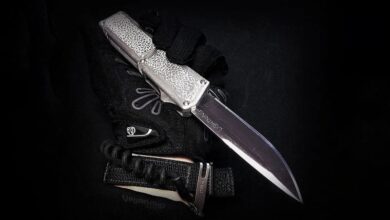This Is The Ultimate Sneakers Guide.

Among the mens footwear universe, sneakers occupy one of the first places. Sneakers are a word widely used in the United States and other English-speaking countries to refer to sneakers. However, it is essential to note the difference between tennis shoes and sneakers, where sneakers refer to more casual sports footwear. In contrast, tennis refers to a specialized type of footwear for doing some sport.
The term sneakers come from the word “sneak” which means to move stealthily or stealthily and comes from Old English. Until the 19th century, most shoes were made of leather. This told that whoever wore them when walking would make noise and could never go unnoticed.
With the appearance of rubber, everything changed; it began to be replaced by leather, which caused the noise cancellation when walking so that it was possible to walk stealthily. Hence the appearance and use of the term sneakers.
The first sneakers appeared at the end of the 18th century when they were worn with rubber soles. At that time, they were called plimsoll shoes. Plimsolls had no distinction between right and left foot shoes. In those days, shoes were made for both feet, according to a single pattern.
Over the years, these shoes took different shapes until Keds, an American company, designed a half-dark version, with its Champion model, with a simple upper construction. The style of this model has been popular for years. Kedsy began to be mass-produced in 1917. At precisely the same time, the first Converse All-Stars basketball shoes known today as the Chuck Taylor All-Stars appeared on the market. At the same time, sneakers were being created in Europe. In 1949 Adi Dassler created the Adidas brand, which quickly became one of the most popular brands in those years. At that time, Adidas laid the first stone to become a benchmark in sports footwear, reigning in the classic sneaker category; its Azteca-Gold sneakers were beautiful. A few years later, his brother Rudolf, the company Puma. Later in the 1970s, Nike would enter the game and dominate it from the beginning with its Cortez model, an icon that is still a trend today.
Initially, this type of men’s footwear was designed with athletes in mind, but with the advent of the 1980s, it was fashionable to include sneakers in everyday style. Sales of sneakers on a large scale began in 1985 when Michael Jordan made his debut on the field with Nike sneakers, his namesake model.
Sneakers include classic closed-toe, high-tops, mid-cut, mid-cut, and conventional low-tops, which leave the ankle uncovered.
Sometimes you will find the term “plimsoll,” especially in British English, which refers to the colored band that divides the sole with the upper. Therefore, this is an aesthetic division and not one of quality or materials.
We can also come across the term “slip-ons,” referring to sneakers put on like a shoe, i.e., they do not have strings and therefore do not lace up.
Athletic, sport, or conventional (or classic) shoes refer to shoes that have a closed toe, i.e., if we remove the laces, the shoe does not remain open in its entirety, and the tongue is permanently sewn (or glued, as the case may be) as a separate piece. You will see them described in many places as CVO (Circular Vamp Oxford) or as “Eye Stay Close.”
The popularization of Converse has given rise to a whole new definition of a sneaker, that is, one that has both sides loose and where the tongue, in most cases, is the same piece as the toe. These are often referred to as oxford or “ballerina” type.
Sneakers could only be found in sports brands such as Adidas, Nike, Reebok, Puma, and New Balance. However, you can also find them in the offer of brands not associated with the sports style until now. They first appeared in the exhibitions of haute couture designers and various luxury brands.
The popularity of sneakers is based on their universal character. Everyone can wear them, be comfortable, and without sacrificing style, so they fit almost any look.





